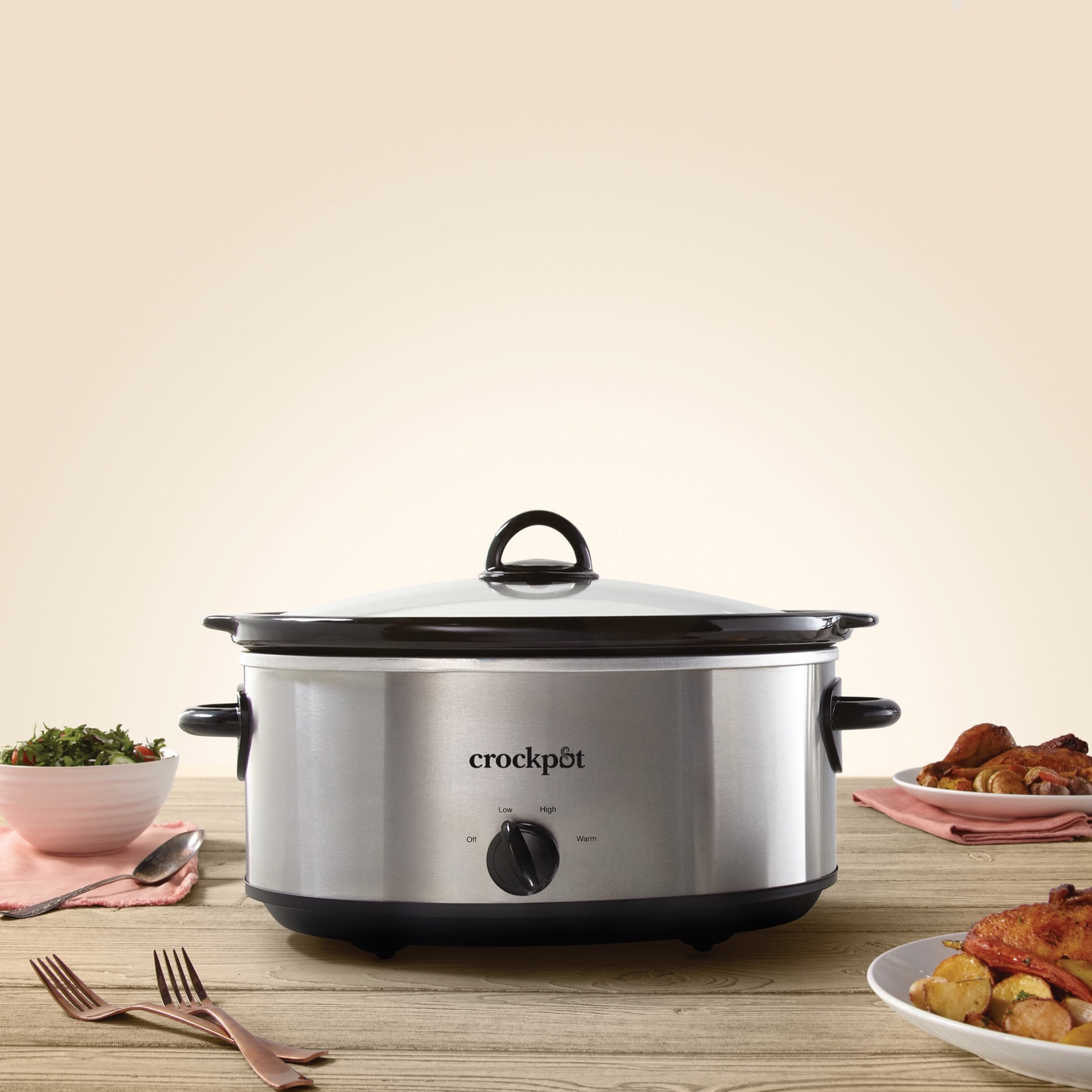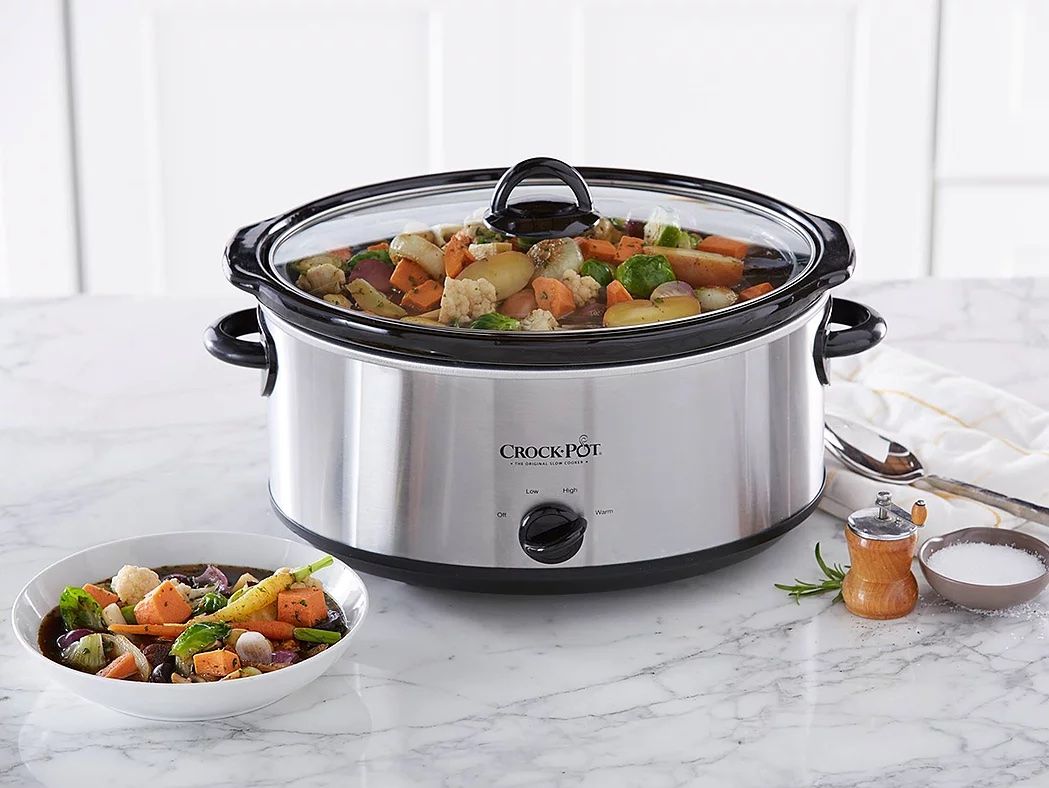Welcome back to the Crock Potz kitchen! Let’s talk about a moment every slow cooker enthusiast knows all too well. You’ve been smelling that incredible aroma for hours—the rich scent of a slow-braised roast or a hearty chili filling your home. You’re ready to serve up a masterpiece, but when you scoop it out, you hear that dreaded scrape. Half your delicious meal is stubbornly welded to the bottom of the insert. We’ve all been there! Learning How To Prevent Food Sticking In Crock Pot inserts is the secret to transforming a good meal into a perfect one, with cleanup that’s just as effortless.
Stick with me, and I’ll share the tried-and-true secrets I’ve learned over years of “set it and forget it” cooking. These aren’t just random tips; they’re the foundational techniques that will make you a slow cooking pro and save you from ever scrubbing a burnt-on mess again.
Why Does Food Stick in a Slow Cooker Anyway?
Before we dive into the solutions, it helps to understand the “why.” Your Crock Pot cooks with gentle, consistent heat, but that heat primarily comes from elements wrapped around the bottom and sides of the stoneware insert. This direct contact can create hot spots, especially if there isn’t enough liquid.
The main culprits for sticking are:
- Sugars: Ingredients with high sugar content, like barbecue sauce, honey, or even sweet vegetables like carrots, can caramelize and burn onto the hot surface.
- Starches: Foods like potatoes, rice, and pasta release starches as they cook. These starches can form a glue-like layer at the bottom of the pot.
- Lean Proteins: Meats with very little fat, like chicken breast or lean pork loin, lack the natural lubrication to prevent them from sticking to the hot ceramic.
Understanding this helps us tackle the problem at its source. Now, let’s get to the good stuff.
The Ultimate Guide on How to Prevent Food Sticking in Crock Pot
Think of these tips as your slow cooking toolkit. You might not need every tool for every job, but knowing they’re available will guarantee success.
1. The Foundation: Grease Your Insert
This is the simplest and most effective first line of defense. Just like you’d grease a baking pan, creating a barrier between the stoneware and your food is a game-changer. It takes less than 30 seconds and can save you 30 minutes of scrubbing later.
- Cooking Spray: A quick, even spritz of your favorite non-stick cooking spray is the easiest method.
- Butter or Shortening: For a richer flavor profile, especially with roasts or baked goods like dump cakes, I love rubbing a thin layer of softened butter or solid shortening all over the inside of the insert.
- Oil: A light coating of a neutral oil like canola, vegetable, or avocado oil works perfectly. Just pour a little in and use a paper towel to wipe it across the bottom and up the sides.
Expert Tip from Sarah Carter, Family Meals Blogger: “I tell my readers to treat their slow cooker insert like a cast iron skillet. A little bit of fat to start creates a beautiful, non-stick surface that also helps with browning and flavor development over the long cook time.”
2. The Cleanup Hero: Use a Slow Cooker Liner
Have you ever wished you could just lift the mess out and throw it away? Well, you can! Slow cooker liners are food-safe plastic bags that fit inside your insert.
When you’re done cooking, you simply remove the liner and toss it. The result? A virtually spotless Crock Pot. They are lifesavers for especially sticky recipes like our famous Crock Pot Mac and Cheese. While they are an extra cost and create some waste, for those super busy weeknights or when making something notoriously sticky (I’m looking at you, BBQ pulled pork), they are absolutely worth it.
3. Build a Natural Barrier: The Vegetable Raft
This is one of my favorite “pro” tricks, and it adds flavor, too! Before you add your meat, create a bed of sturdy vegetables on the bottom of the Crock Pot. This “raft” physically lifts the protein off the hottest part of the insert, preventing it from sticking and burning.
- What to use: Thickly sliced onions, carrots, celery, or potatoes are perfect.
- How it works: The vegetables release moisture as they cook, creating a steamy, protective layer. Plus, they absorb all the delicious drippings from the meat, becoming incredibly flavorful side dishes. This is my go-to method for a perfect pot roast every time.
4. Liquid is Your Best Friend
A dry slow cooker is a recipe for disaster. Liquid not only helps tenderize your food and create a sauce, but it’s also essential for preventing sticking by regulating the temperature at the bottom of the insert.
Make sure your recipe includes enough liquid—like broth, water, canned tomatoes, or a marinade—to cover the bottom of the insert by at least half an inch. If you’re adapting a recipe that wasn’t designed for a slow cooker, you may need to add a bit more liquid, as there’s less evaporation than in an oven or on a stovetop.
5. Layer Your Ingredients Strategically
How you load your Crock Pot matters. Placing ingredients in the correct order ensures everything cooks evenly and minimizes the risk of burning.
- Bottom Layer: Always start with root vegetables and firm items (potatoes, carrots, onions). They take the longest to cook and benefit from being closest to the heat source. They also act as that “vegetable raft” we just talked about.
- Middle Layer: Place your protein (chicken, beef, pork) on top of the vegetables.
- Top Layer: Finish with more delicate ingredients, such as softer vegetables (bell peppers, mushrooms) or anything you don’t want to get mushy.
A crucial note: Resist the urge to stir! Unlike stovetop cooking, a Crock Pot is designed to be a closed system. Lifting the lid releases heat and steam, which can extend the cooking time and dry out your food, increasing the chances of it sticking.
6. Be Mindful of Sugars and Dairy
As we mentioned, sugar is a major culprit. If you’re making a recipe with a sweet, thick sauce like barbecue or teriyaki, don’t add it all at the beginning.
- The Solution: Cook your meat in a base liquid (like broth) for most of the cooking time. Then, drain the excess liquid and add your sugary sauce for the last 30-60 minutes of cooking. This gives it enough time to thicken and coat the meat without scorching on the bottom for 8 hours. The same principle applies to dairy like cheese or heavy cream; stir them in at the end to prevent curdling and sticking.
How Long Do I Cook Food to Avoid Sticking?
Cooking time is a factor! Overcooking can cause all the liquid to evaporate, leaving your food high and dry against the hot ceramic. Always use the cook time recommended in your recipe. If you have the choice, cooking on “Low” for a longer period is gentler and less likely to cause sticking than cooking on “High” for a shorter time.
| Setting | General Guideline | Best For |
|---|---|---|
| LOW | 1 hour on High ≈ 2 hours on Low | Tougher cuts of meat, all-day cooking, developing deep flavors. Less prone to sticking. |
| HIGH | Use for shorter cook times | Soups, stews, and when you’re shorter on time. Requires more liquid to prevent sticking. |
Frequently Asked Questions (FAQ)
Here are some common questions I get from our Crock Potz community about this very topic.
Can I use parchment paper instead of a liner?
Yes, you can line your Crock Pot with parchment paper as an alternative. It works best for “drier” recipes like casseroles, breads, or roasts. It may not contain liquids as effectively as a plastic liner, so be cautious with soups or saucy dishes.
Does a non-stick Crock Pot insert really prevent sticking?
Many modern slow cookers come with non-stick coated inserts. They definitely help reduce sticking compared to traditional stoneware, but they are not foolproof. You’ll still benefit from lightly greasing the insert, especially when cooking sugary or starchy foods.
Why does my food stick even when I use a liner?
This can happen if the food is overcooked to the point where all the moisture has evaporated, causing the sugars in the food to caramelize and “glue” themselves to the liner. Ensure you have enough starting liquid and follow the recipe’s cooking time.
Is it better to cook on Low or High to prevent sticking?
Cooking on the “Low” setting is almost always better for preventing sticking. The heat is gentler and more evenly distributed, giving ingredients time to cook through without scorching on the bottom. The “High” setting creates more intense hot spots.
How do I clean a badly burnt and stuck-on mess?
If the worst happens, don’t panic! Fill the insert with warm water and a good squirt of dish soap. For really tough messes, add a few tablespoons of baking soda and a splash of white vinegar. Let it soak for several hours or even overnight. The stuck-on food should lift off with minimal scrubbing.
Your Journey to Stick-Free Slow Cooking
Mastering how to prevent food sticking in your crock pot is all about a little bit of prep and a little bit of science. By greasing your insert, using liners, layering smartly, and managing your liquids and sugars, you can guarantee a perfect result every single time.
The true beauty of the Crock Pot is its ability to deliver an incredible, home-cooked meal with minimal effort. Don’t let the fear of a messy cleanup hold you back. Embrace these tips, and you’ll unlock a new level of confidence in your slow cooking adventures.
Now I’d love to hear from you! What are your go-to tricks for preventing a sticky situation? Share your wisdom in the comments below and let’s help everyone in the Crock Potz community cook smarter, not harder.
